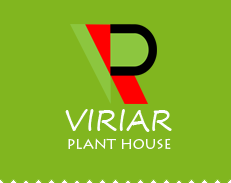VIRIAR
Jubaeopsis caffra - Pondoland Palm - 2 x fresh seeds
Jubaeopsis caffra - Pondoland Palm - 2 x fresh seeds
Impossible de charger la disponibilité du service de retrait
Plant Description
Name: Jubaeopsis caffra
Common Name: Kaffir Palm
Jubaeopsis caffra, commonly known as the Kaffir Palm, is a unique and striking palm native to South Africa. This palm is notable for its distinctive foliage and compact growth habit, making it a popular choice for ornamental planting in tropical and subtropical landscapes, as well as for indoor cultivation.
The Kaffir Palm is a relatively small palm that typically grows to a height of 4-6 meters (13-20 feet). It features a solitary trunk that is slender and often covered with leaf scars. The palm’s most prominent feature is its large, fan-shaped leaves that are deeply divided into multiple segments. The leaves are arranged in a crown at the top of the trunk and are a vibrant green color with a slightly glossy texture. The Kaffir Palm produces small, inconspicuous flowers, which are followed by small, round fruits that are not particularly ornamental compared to the palm's striking foliage.
Cultivation of Jubaeopsis caffra
Conditions:
- Light: Jubaeopsis caffra thrives in bright, indirect light but can also tolerate partial shade. It prefers filtered light, which is ideal for indoor cultivation. When grown outdoors, it should be planted in a location with dappled sunlight or light shade to protect it from harsh midday sun.
- Temperature: This palm prefers warm climates with temperatures ranging from 15-30 °C (59-86 °F). It is sensitive to frost and should be protected from temperatures below 5 °C (41 °F). It is suitable for USDA zones 9-11.
- Soil: The Kaffir Palm prefers well-draining soil, such as sandy or loamy soil, that allows excess water to escape. A potting mix designed for palms or a blend of peat, perlite, and sand provides good drainage and aeration. It can adapt to a range of soil types as long as they are well-draining and slightly acidic to neutral in pH.
- Water: Regular watering is important for the Kaffir Palm. Keep the soil consistently moist but not waterlogged. Allow the top layer of soil to dry out slightly between waterings. Reduce watering during the winter months when the plant's growth slows down.
Planting and Care:
- Planting: For indoor cultivation, use a pot with drainage holes and a well-draining potting mix. Choose a location with bright, indirect light or partial shade. When planting outdoors, select a site with well-draining soil and protection from harsh sunlight.
- Fertilization: Feed Jubaeopsis caffra with a balanced, slow-release fertilizer formulated for palms. Apply fertilizer every 6-8 weeks during the growing season (spring and summer) to support healthy growth and maintain its vibrant foliage. Avoid over-fertilizing, as this can lead to nutrient imbalances.
- Maintenance: Prune off any dead or damaged fronds to maintain the palm's appearance and encourage new growth. The Kaffir Palm is relatively low-maintenance but should be monitored for pests such as spider mites and scale insects. Ensure good air circulation around the plant to minimize the risk of fungal diseases.
Growing from Seeds
- Seed Preparation: Soak the seeds of Jubaeopsis caffra in warm water for 24-48 hours to help soften the seed coat and improve germination rates. Scarify the seeds by lightly sanding them if necessary.
- Sowing: Sow the seeds in a well-draining seed-starting mix. Plant the seeds about 1-2 cm (0.5-0.8 inches) deep and cover lightly with soil.
- Germination Conditions: Place the seed tray in a warm, humid environment with temperatures around 25-30 °C (77-86 °F). Keep the soil consistently moist and provide bright, indirect light. Germination can be slow and may take several weeks to a few months.
- Care for Seedlings: Once seedlings emerge, provide them with bright, indirect light and gradually acclimate them to more direct light. Transplant seedlings into larger pots or directly into the garden when they are large enough to handle.
Jubaeopsis caffra is a striking palm that adds an exotic touch to any landscape or indoor setting with its distinctive fan-shaped foliage and elegant form. Its relatively compact size and attractive appearance make it a valuable addition for plant enthusiasts and gardeners.
Shipping & Returns
Shipping & Returns


















